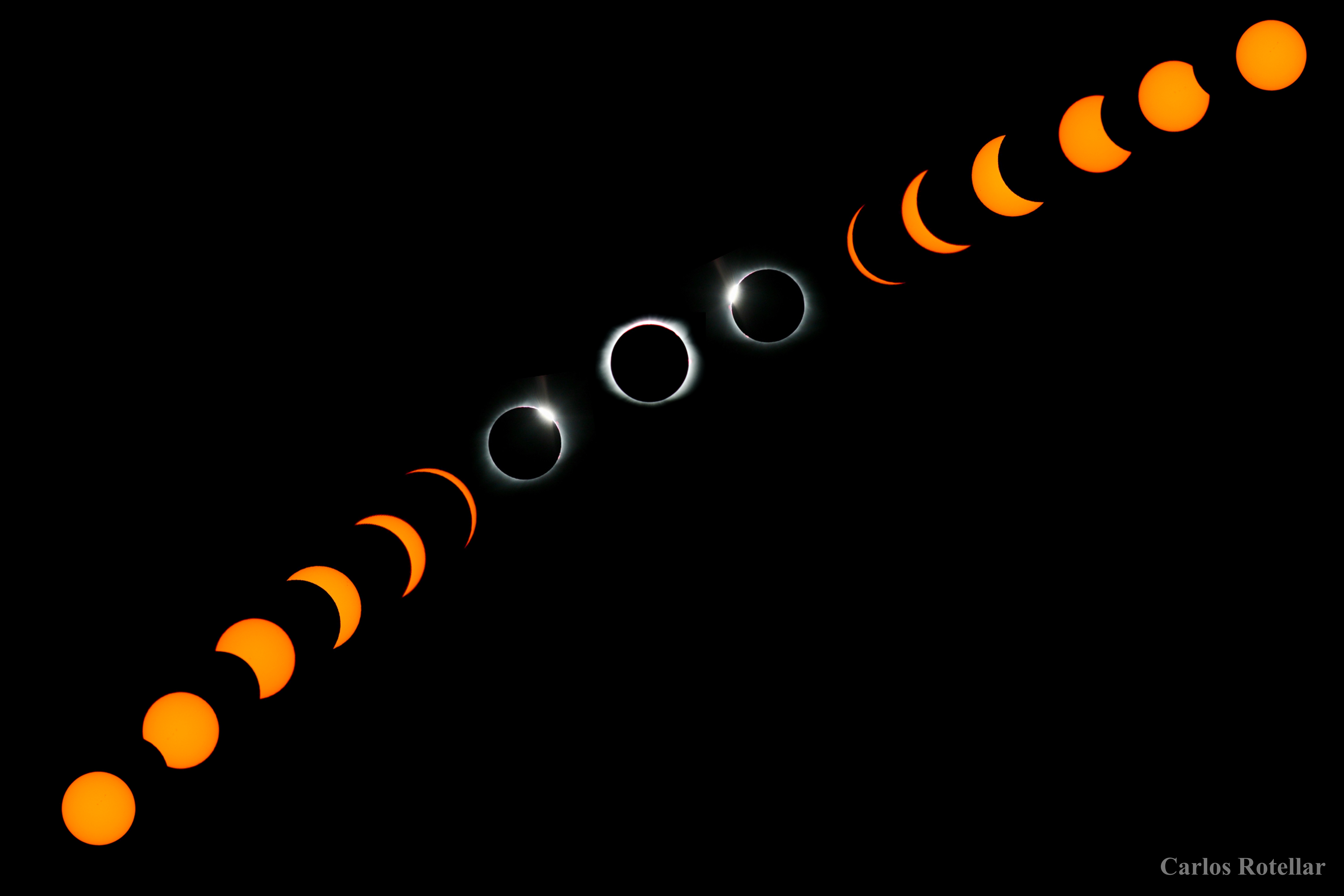Comet Lemmon 2025 A6
Comet Lemmon popped into view a few weeks ago from behind the Sun. It's now a dim naked-eye object and easy binocular target. For the week of Oct 12, you'll need a good view to the north and be out before dawn. Over the next few days, Comet Lemmon transitions to an evening object. How bright will it be? When will it fade out? Take a look and find out.
Comet Lemmon mornings in October.pdf
Comet Lemmon evenings in October.pdf
Pi-Day Total Lunar Eclipse (early Early morning)
From midnight on Mar 13-14 until about 6 AM the moon will pass through the Earth's shadow. Depending on how much dust there is in the atmosphere, it will change color anywhere from a light pink to a deep, and dark, red. The most obvious parts occur between 1:09 AM on the 14th until 4:47 AM. The observatory will be open, should it be clear.
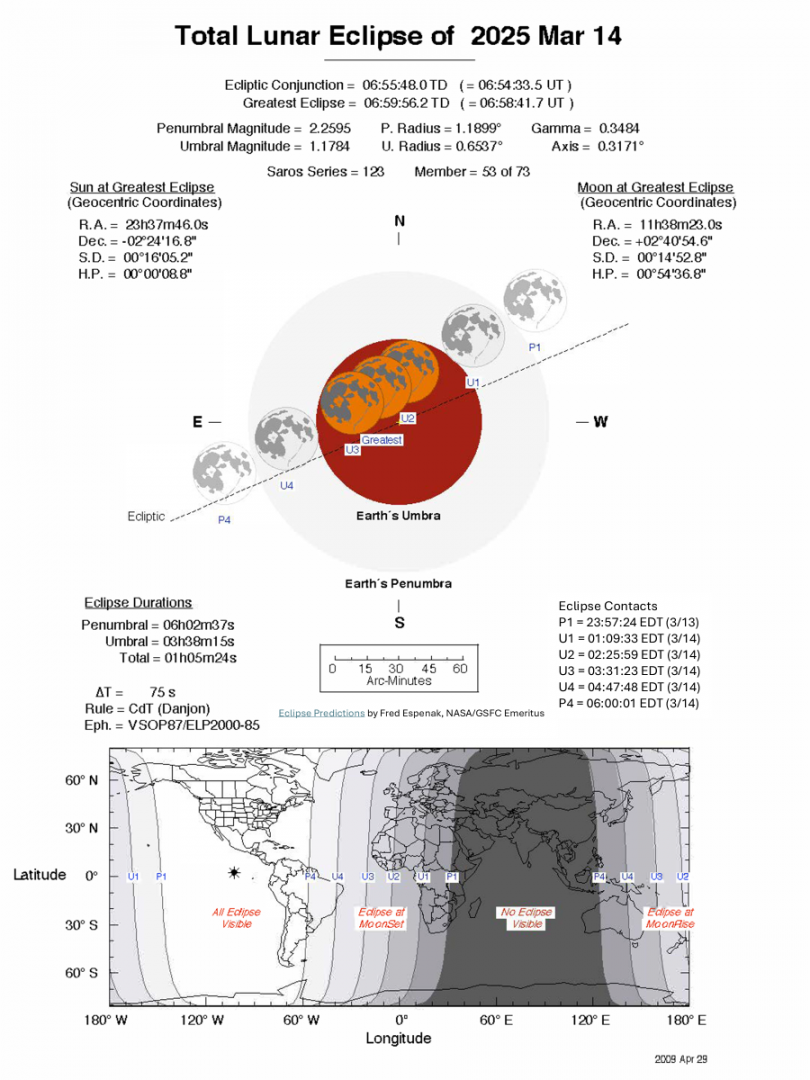
See Mercury in March, 2025
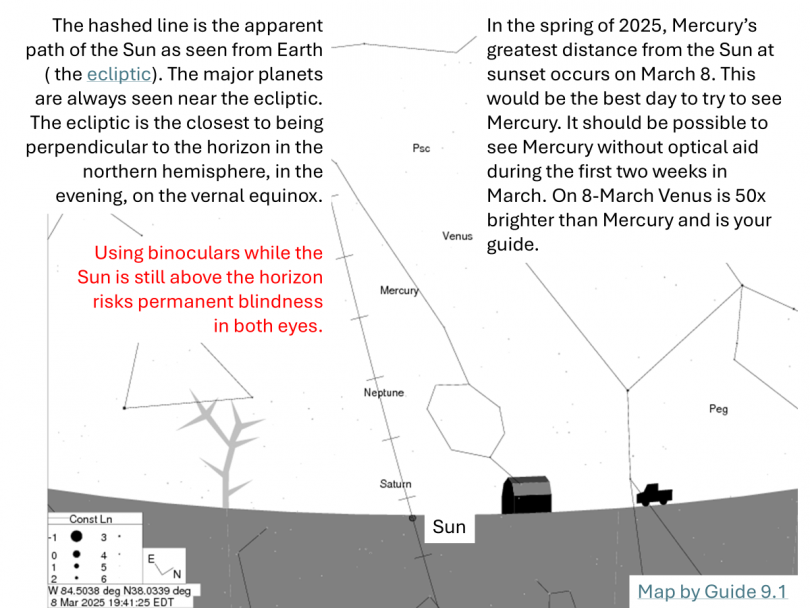
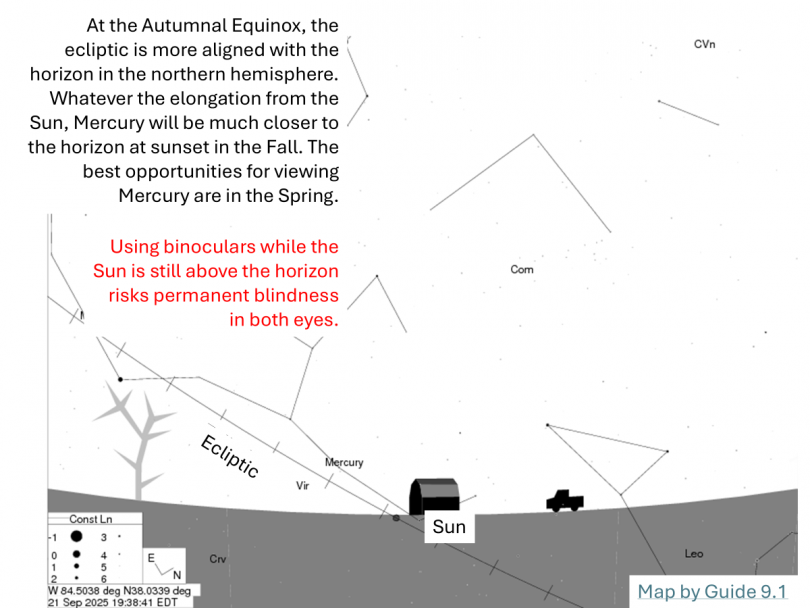
2025-03-08 Mercury at Sunset.pdf
Planetary "Alignment" January, 2025
The plane of the solar system is defined by the orbit of the Earth. By definition, it is the apparent path of the Sun as it moves from day to day with respect to the stars. This line in the sky is called the ecliptic. No orbits of the major planets deviate from the ecliptic plane by more than 7°. As viewed from the Earth, the planets can never be seen far away from the ecliptic. The major planets are always observed near this line, whether or not they are hidden by the Earth or by daylight. This “alignment” is guaranteed.
The orbits of the eight major planets when viewed edge-on:

These “alignments” are not uncommon. It isn’t truly an alignment just because the angular distance between the planets is less than 180 degrees.
You can find an interactive model of the solar system here: https://ssd.jpl.nasa.gov/tools/orbit_viewer.html
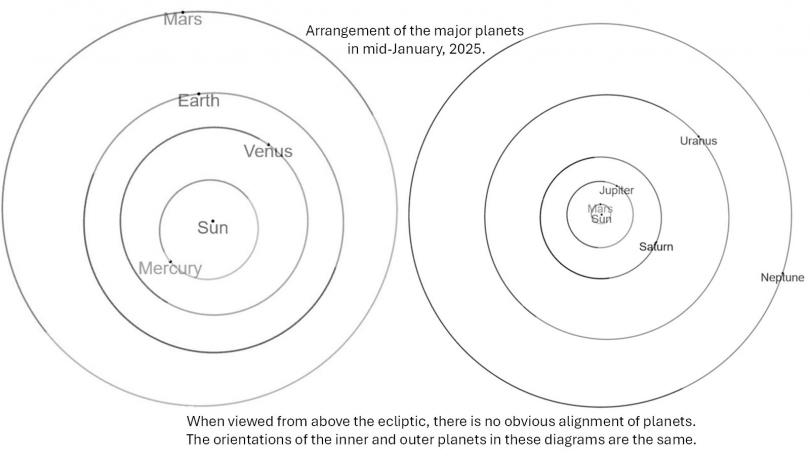
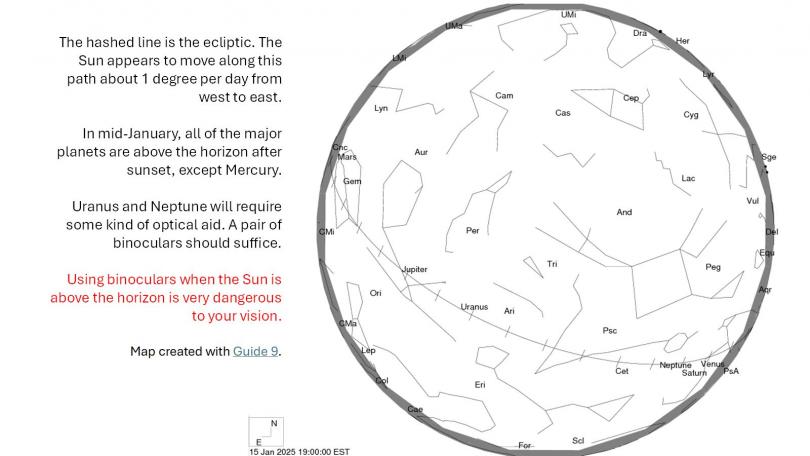
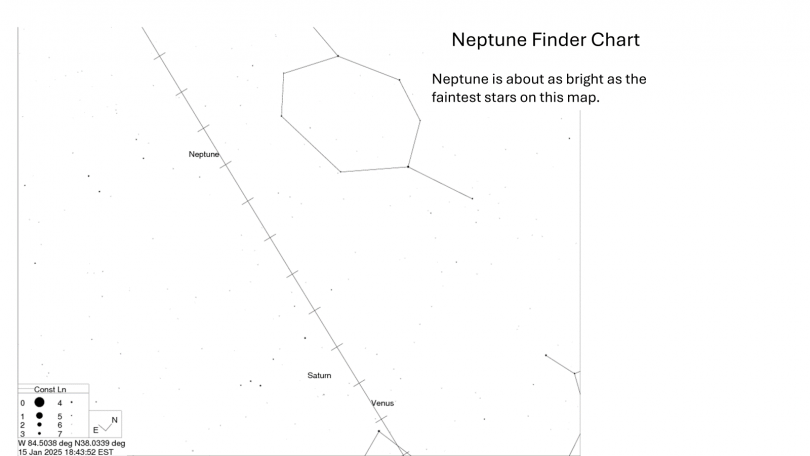
A PDF of the above can be found here: https://observatory.as.uky.edu/sites/default/files/2025%20January%20planetary%20alignment_0.pdf
Lunar Occultation of Mars - January 13, 2025
On Monday evening, January 13, 2025, Mars will be occulted by the Moon. From Lexington, KY, it will disappear behind the eastern limb of the Moon, at ~9:07 PM EST. (The eastern limb of the Moon is the side closest to the eastern horizon.) It will reappear on the western edge at ~10:18 PM EST. Mars will be the brightest thing near the limb of the Moon.
At the time of the occultation, the full moon is 33,000 times brighter than Mars. Binoculars will be useful. The full phase of the Moon occurs at 5:27 PM EST the same day. Full moon occurs when the Moon is opposite in the sky from the Sun. Since Mars is in the same direction as the Moon, it too must be at a full phase.
To estimate the timings for your location, you can use this map published by the Astronomical League. Give yourself an extra ten minutes before ingress and egress. The map uses local times for each city.
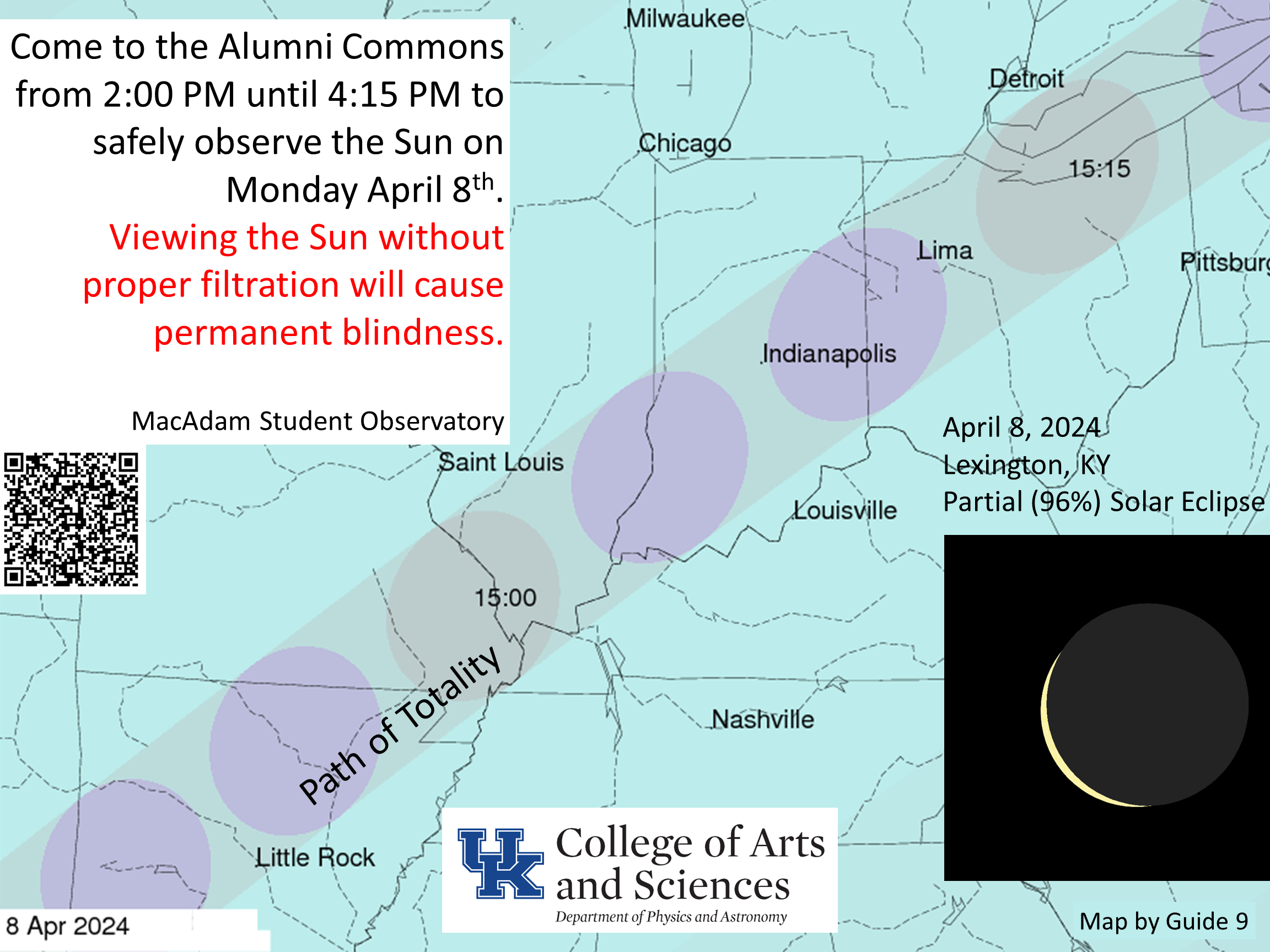
After the Eclipse
Wondering what to do with your eclipse glasses after the eclipse? One option is to donate them to be distributed to people in South America with a view of an annular eclipse later in 2024. If you have glasses that you would like to donate you can drop them off in CP 171. Make sure the glasses are free of scratches and pinholes and from a trusted manufacturer so that they provide a safe viewing experience for the person receiving them.
Off campus? Check out donate efforts by Eclipse Glasses USA and Astronomers Without Borders for ways to directly donate through them.
https://astronomerswithoutborders.org/programs/solar-glasses-distribution#collection_node
https://eclipse23.com/pages/donate-eclipse-glasses
Want to learn more about the upcoming eclipse such as what to expect in Lexington and in the path of totality. Check out this months sky talk: https://www.youtube.com/watch?v=tIUE_eMg-LM
Pictured below is a selection of images depicting the 2017 solar eclipse. The image captures the movement of the moon in front the sun during an eclipse as seen from the path of totality. It is a composite of a selection of 156 images taken with a Canon camera, with a focal length of 300 mm and ISO of 400. Images are courtesy of Martina Fee and Carlos Rotellar.
